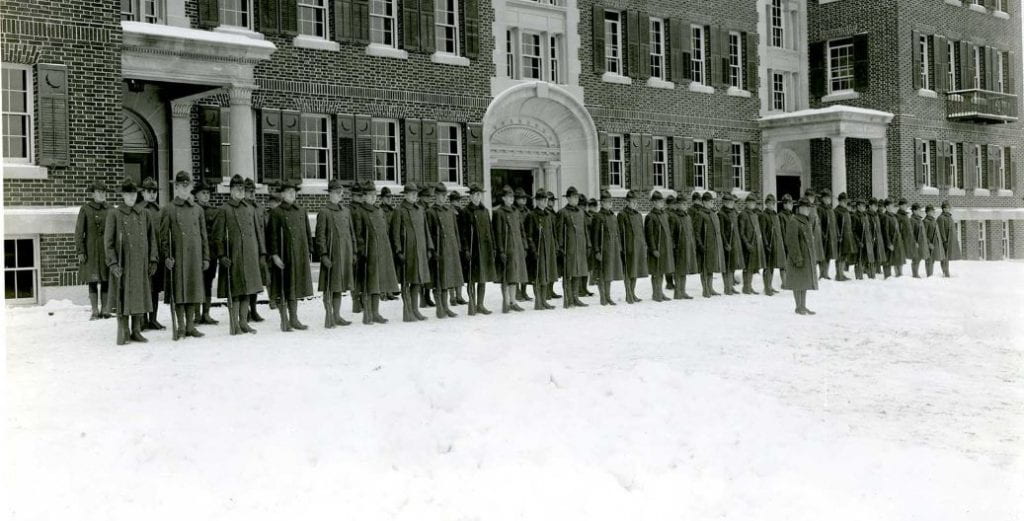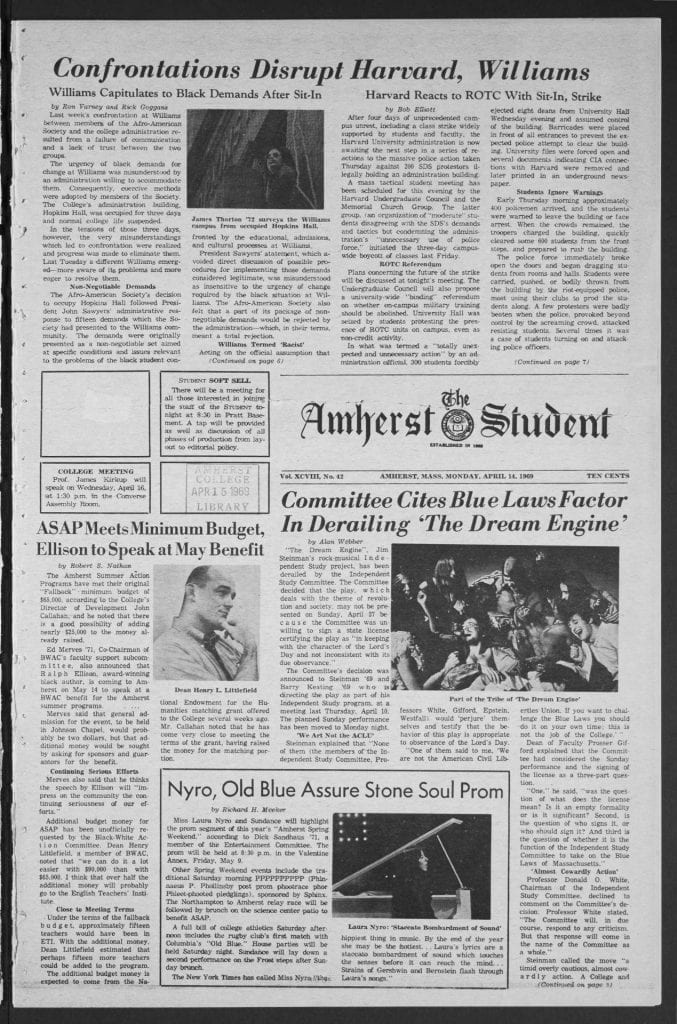A Comprehensive timeline of disasters in Amherst History, with analysis of their compositions and implications by Haoran Tong …
A Timeline of Disasters in Amherst History


A Comprehensive timeline of disasters in Amherst History, with analysis of their compositions and implications by Haoran Tong …
Text Analysis The text analysis for the lone humor piece reported a vocabulary density of 0.499 and 17.9 average words per sentence. The most frequent words in the corpus are officer (7); lieutenant (5); salute (5); generals (4); company (3). Performing text analysis on a humor piece presents similar challenges as those found in performing…
“War is not a time for the exercise of the emotions of youth; it is a time for sober, rational reflection. ” — E.W.M. The Enlistment Problem. “Patriotism or Common Sense”. Amherst Monthly. March 1917. Text Analysis The essays are primarily opinion pieces detailing different stances concerning the war. One two-part text titled The Enlistment Problem…
Text Analysis The second smallest genre of documents are the poems. These poems are titled The Battlefield by A.E. Harris and Poems of the War – “K.P.” Kitchen Police and The Two Columns by Laurence E. Crooks, E Co., 6th U.S. Engineers. These poems use figurative language and imagery to illustrate the more mundane aspects…
Text Analysis Within the collection of documents, the majority of the texts are from a series titled War Letters. These letters were written by current students and alums performing military service abroad and domestically. In these letters, servicemen share their feelings of loneliness and homesickness. They express both their frustrations concerning the often grueling conditions…

An Analysis of the Use of “Disaster” Corpus in The Amherst Student, 1880-90 vs 1980-90 “It’s such a disaster!” We hear phrases like this every day. Depending on the contexts, we interpret what “disasters” might refer to, possibly from as trivial a poor exam performance to as significant a world war. Not unexpectedly, writers and…
You must be logged in to post a comment.